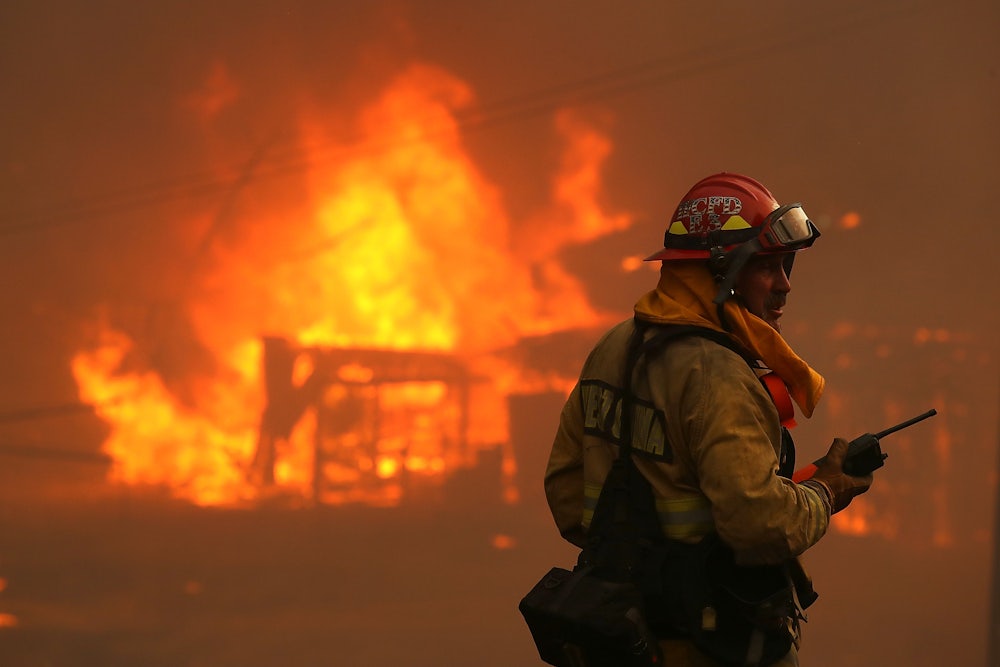The wildfire season is only half over, but it’s already breaking records. On Monday, the Mendocino Complex fire, 130 miles northwest of Sacramento, became the largest wildfire in the state’s history. The fire—which formed when two separate fires combined into one massive behemoth—spans 443 square miles, almost the size of Los Angeles. It’s only 30 percent contained.
The Mendocino fire is burning mostly in remote areas, which is why no one has died and the damage has been relatively limited. (The ongoing Carr fire in Redding, California, has killed six people and is the seventh most destructive in California’s history.) But firefighters, who have been stretched thin since last year’s historically destructive season, are struggling to contain the massive blaze, which threatens at least 11,000 structures.
Now, as 17 blazes rage across the state, the 14,000 firefighters battling them are confronting two terrifying possibilities: One, that this year’s season could be a repeat of last year’s, and two, that every season moving forward might be this destructive due to climate change.
“I can remember a couple of years ago when we saw 10,000 to 12,000 firefighters in the states of California, Oregon and Washington and never the 14,000 we see now,” Scott McLean, a deputy chief with state firefighting agency Cal Fire, told the Associated Press. To The Los Angeles Times, he expressed disbelief at how quickly the Mendocino fire became a record-breaking inferno. “That doesn’t happen,” he said. “That just doesn’t happen.”
It does now.
